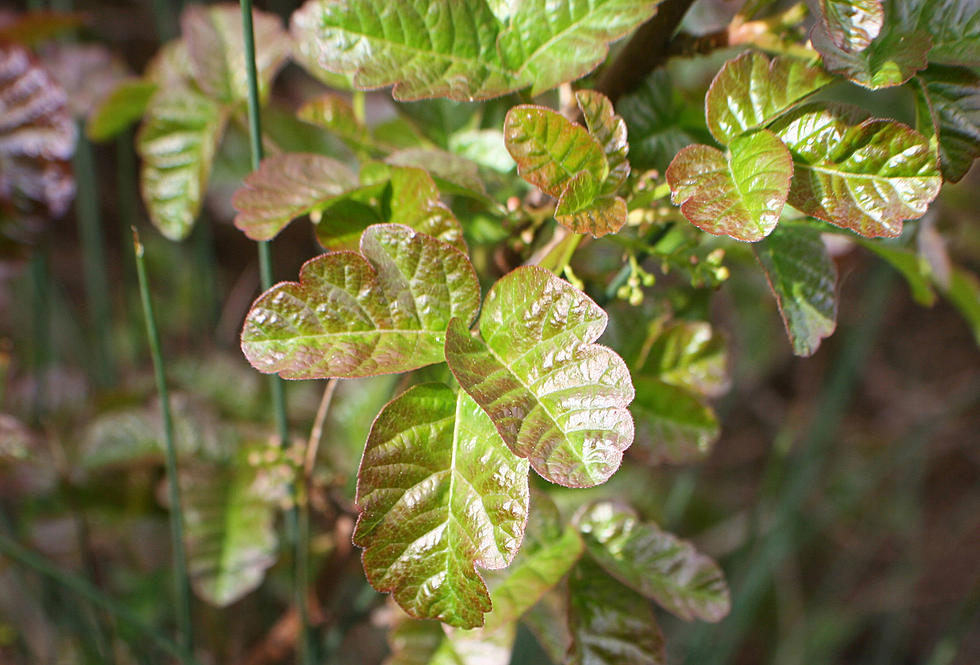
FACT: Poison Oak has NEVER Been Documented in Iowa
Eastern and Western Poison Ivy are found abundantly in Iowa, but poison oak and poison sumac have never been documented by botanists in the state, according to the Iowa DNR.
Poison sumac has been officially spotted in every state east of Iowa, and also in Minnesota, Wisconsin, and Illinois, but not officially in Iowa. While Pacific Poison Oak is relegated to the Western U.S. and Atlantic Poison Oak can be found in the Southern and Southeastern U.S.
Poison Oak range (Pacific poison oak (left); Atlantic poison oak (right):
Poison Sumac range:
But all three (Poison oak, sumac, ivy) have similar characteristics, including urushiol, which gets released when the leaf other parts of the plants become damaged or even burned.
In Iowa, fragrant sumac (photos) may be often confused for poison oak, but it's not poisonous. It also grows in the same area as poison ivy – which could possibly be mistaken as to why a rash showed up when it was actually from the poison ivy, not poison oak.
Regardless, exposure to the urushiol from poison ivy, poison oak, or poison sumac, will cause an itchy red rash with bumps or blisters. Even just a tiny amount of this oil – less than a grain of salt -- will cause a rash to develop on up to 80 to 90 of adults, according to the CDC.
So while the oil can cause the same reaction, the itchy, blistery, rash does not by itself indicate which species you encountered. But in Iowa, the culprit is most likely poison ivy.
How to identify Poison Oak (pictured below):
*Usually, a shrub with leaves of three, similar to poison ivy
*Pacific poison oak may be vine-like
*May have yellow or green flowers and clusters of green-yellow or white berries
How to Identify Poison Sumac: (pictured below)
*Woody shrub that has stems that contain 7-13 leaves arranged in pairs
*May have glossy, pale yellow, or cream-colored berries
As for poison ivy, the old saying of “Leaves of Three, Let it Be” can be quite helpful. However, it’s not the only plant with three leaves, so look for leaves that are anywhere from two to five inches long. And actually, it’s three leaflets on a single leaf, not individual leaves. Eastern poison ivy grows as a rope-like vine. Western poison ivy is more of a shrub. It blooms in the spring and has white/yellow berries from late summer through winter.
Other rhymes to help you stay away from Poison Ivy include:
"Hairy vine, no friend of mine"
"Berries white, danger in sight"
Eastern Poison Ivy:
Why do cats have whiskers? Why do they meow? Why do they nap so much? And answers to 47 other kitty questions:
Check out these 50 fascinating facts about dogs:
More From AM 950 KOEL

![Luke Combs’ 10 Best Live Covers [Watch]](http://townsquare.media/site/204/files/2024/04/attachment-Luke-Combs-Tracy-Chapman-Vince-Gill-Randy-Houser-Ed-Sheeran.jpg?w=980&q=75)







